 |
by Caiwei Chen, Will Douglas Heaven, Michelle Kim, Ja on (#72CZA)
If the past 12 months have taught us anything, it's that the AI hype train is showing no signs of slowing. It's hard to believe that at the beginning of the year, DeepSeek had yet to turn the entire industry on its head, Meta was better known for trying (and failing) to make the metaverse...
|
MIT Technology Review
| Link | https://www.technologyreview.com/ |
| Feed | https://www.technologyreview.com/stories.rss |
| Updated | 2025-12-26 05:30 |
 |
by Finian Hazen on (#72CEK)
In April 2025, Ronald Deibert left all electronic devices at home in Toronto and boarded a plane. When he landed in Illinois, he took a taxi to a mall and headed directly to the Apple Store to purchase a new laptop and iPhone. He'd wanted to keep the risk of having his personal devices confiscated...
|
 |
by Casey Crownhart, James Temple on (#72CEJ)
Climate news hasn't been great in 2025. Global greenhouse-gas emissions hit record highs (again). This year is set to be either the second or third warmest on record. Climate-fueled disasters like wildfires in California and flooding in Indonesia and Pakistan devastated communities and caused billions in damage. In addition to these worrying indicators of our...
|
 |
by Antonio Regalado on (#72C0B)
At first glance, it looks like the start of a human pregnancy: A ball-shaped embryo presses gently into the receptive lining of the uterus and then grips tight, burrowing in as the first tendrils of a future placenta appear. This is implantation-the moment that pregnancy officially begins. Only none of it is happening inside a...
|
 |
by Will Douglas Heaven on (#72BQZ)
Demis Hassabis, CEO of Google DeepMind, summed it up in three words: This is embarrassing." Hassabis was replying on X to an overexcited post by Sebastien Bubeck, a research scientist at the rival firm OpenAI, announcing that two mathematicians had used OpenAI's latest large language model, GPT-5, to find solutions to 10 unsolved problems in...
|
by Caiwei Chen on (#72BQY)
Lately, everywhere I scroll, I keep seeing the same fish-eyed CCTV view: a grainy wide shot from the corner of a living room, a driveway at night, an empty grocery store. Then something impossible happens. JD Vance shows up at the doorstep in a crazy outfit. A car folds into itself like paper and drives...
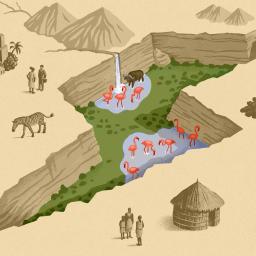 |
by Diana Kruzman on (#72B02)
The earth around Lake Naivasha, a shallow freshwater basin in south-central Kenya, does not seem to want to lie still. Ash from nearby Mount Longonot, which erupted as recently as the 1860s, remains in the ground. Obsidian caves and jagged stone towers preside over the steam that spurts out of fissures in the soil and...
|
 |
by Jessica Hamzelou on (#72B03)
At some point next month, a handful of volunteers will be injected with two experimental gene therapies as part of an unusual clinical trial. The drugs are potential longevity therapies, says Ivan Morgunov, the CEO of Unlimited Bio, the company behind the trial. His long-term goal: to achieve radical human life extension. The 12 to...
|
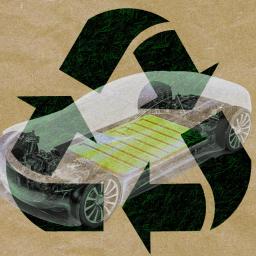 |
by Rhiannon Williams on (#729CK)
This is today's edition ofThe Download,our weekday newsletter that provides a daily dose of what's going on in the world of technology. China figured out how to sell EVs. Now it has to bury their batteries. In the past decade, China has seen an EV boom, thanks in part to government support. Buying an electric...
|
 |
by Rhiannon Williams on (#728GW)
This is today's edition ofThe Download,our weekday newsletter that provides a daily dose of what's going on in the world of technology. The 8 worst technology flops of 2025 Welcome to our annual list of the worst, least successful, and simply dumbest technologies of the year. We like to think there's a lesson in every...
|
 |
by Antonio Regalado on (#728GX)
Welcome to our annual list of the worst, least successful, and simply dumbest technologies of the year. This year, politics was a recurring theme. Donald Trump swept back into office and used his executive pen to reshape the fortunes of entire sectors, from renewables to cryptocurrency. The wrecking-ball act began even before his inauguration, when...
|
 |
by Casey Crownhart on (#728E5)
Judging from headlines and social media posts in recent years, one might reasonably assume that AI is going to fix the power grid, cure the world's diseases, and finish my holiday shopping for me. But maybe there's just a whole lot of hype floating around out there. This week, we published a new package called...
|
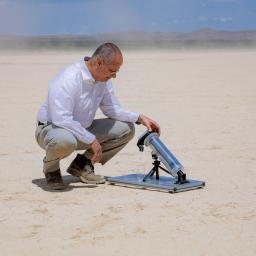 |
by Alexander C. Kaufman on (#727JC)
Omar Yaghi was a quiet child, diligent, unlikely to roughhouse with his nine siblings. So when he was old enough, his parents tasked him with one of the family's most vital chores: fetching water. Like most homes in his Palestinian neighborhood in Amman, Jordan, the Yaghis' had no electricity or running water. At least once...
|
 |
by MIT Technology Review Insights on (#726YA)
Rolling out enterprise-grade AI means climbing two steep cliffs at once. First, understanding and implementing the tech itself. And second, creating the cultural conditions where employees can maximize its value. While the technical hurdles are signicant, the human element can be even more consequential; fear and ambiguity can stall momentum of even the most promising...
|
 |
by Rhiannon Williams on (#726VG)
This is today's edition ofThe Download,our weekday newsletter that provides a daily dose of what's going on in the world of technology. The great AI hype correction of 2025 Some disillusionment was inevitable. When OpenAI released a free web app called ChatGPT in late 2022, it changed the course of an entire industry-and several world...
|
 |
by Niall Firth on (#726RY)
Can I ask you a question: How do you feel about AI right now? Are you still excited? When you hear that OpenAI or Google just dropped a new model, do you still get that buzz? Or has the shine come off it, maybe just a teeny bit? Come on, you can be honest with...
|
 |
by Amos Zeeberg on (#726PJ)
In late September, a Spanish military plane carrying the country's defense minister to a base in Lithuania was reportedly the subject of a kind of attack-not by a rocket or anti-aircraft rounds, but by radio transmissions that jammed its GPS system. The flight landed safely, but it was one of thousands that have been affected...
|
 |
by MIT Technology Review Insights on (#7261V)
When the ABB FIA Formula E World Championship launched its first race through Beijing's Olympic Park in 2014, the idea of all-electric motorsport still bordered on experimental. Batteries couldn't yet last a full race, and drivers had to switch cars mid-competition. Just over a decade later, Formula E has evolved into a global entertainment brand...
|
 |
by Rhiannon Williams on (#725YZ)
This is today's edition ofThe Download,our weekday newsletter that provides a daily dose of what's going on in the world of technology. Introducing: the AI Hype Correction package AI is going to reproduce human intelligence. AI will eliminate disease. AI is the single biggest, most important invention in human history. You've likely heard it all-but...
|
 |
by Edd Gent on (#725V5)
Depending who you ask, AI-powered coding is either giving software developers an unprecedented productivity boost or churning out masses of poorly designed code that saps their attention and sets software projects up for serious long term-maintenance problems. The problem is right now, it's not easy to know which is true. As tech giants pour billions...
|
 |
by James O'Donnell on (#725V4)
Each time you've heard a borderline outlandish idea of what AI will be capable of, it often turns out that Sam Altman was, if not the first to articulate it, at least the most persuasive and influential voice behind it. For more than a decade he has been known in Silicon Valley as a world-class...
|
 |
by Garrison Lovely on (#725V3)
It's a weird time to be an AI doomer. This small but influential community of researchers, scientists, and policy experts believes, in the simplest terms, that AI could get so good it could be bad-very, very bad-for humanity. Though many of these people would be more likely to describe themselves as advocates for AI safety...
|
 |
by Will Douglas Heaven on (#725V2)
Some disillusionment was inevitable. When OpenAI released a free web app called ChatGPT in late 2022, it changed the course of an entire industry-and several world economies. Millions of people started talking to their computers, and their computers started talking back. We were enchanted, and we expected more. We got it. Technology companies scrambled to...
|
 |
by Margaret Mitchell on (#725V1)
On April 28, 2022, at a highly anticipated concert in Spokane, Washington, the musician Paul McCartney astonished his audience with a groundbreaking application of AI: He began to perform with a lifelike depiction of his long-deceased musical partner, John Lennon. Using recent advances in audio and video processing, engineers had taken the pair's final performance...
|
 |
by Michelle Kim on (#725TZ)
When the generative AI boom took off in 2022, Rudi Miller and her law school classmates were suddenly gripped with anxiety. Before graduating, there was discussion about what the job market would look like for us if AI became adopted," she recalls. So when it came time to choose a speciality, Miller-now a junior associate...
|
 |
by David Rotman on (#725TY)
The microwave-size instrument at Lila Sciences in Cambridge, Massachusetts, doesn't look all that different from others that I've seen in state-of-the-art materials labs. Inside its vacuum chamber, the machine zaps a palette of different elements to create vaporized particles, which then fly through the chamber and land to create a thin film, using a technique...
|
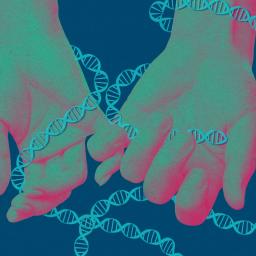 |
by Rhiannon Williams on (#7248D)
This is today's edition ofThe Download,our weekday newsletter that provides a daily dose of what's going on in the world of technology. Expanded carrier screening: Is it worth it? Carrier screening tests would-be parents for hidden genetic mutations that might affect their children. It initially involved testing for specific genes in at-risk populations. Expanded carrier...
|
 |
by Jonathan O'Callaghan on (#7245V)
It's a scorching October day in Bangkok and I'm wandering through the exhibits at the Thai Space Expo, held in one of the city's busiest shopping malls, when I do a double take. Amid the flashy space suits and model rockets on display, there's a plain-looking package of Thai basil chicken. I'm told the same...
|
 |
by Jessica Hamzelou on (#7243J)
This week I've been thinking about babies. Healthy ones. Perfect ones. As you may have read last week, my colleague Antonio Regalado came face to face with a marketing campaign in the New York subway asking people tohave your best baby." The company behind that campaign, Nucleus Genomics, says it offers customers a way to...
|
 |
by Rhiannon Williams on (#72395)
This is today's edition ofThe Download,our weekday newsletter that provides a daily dose of what's going on in the world of technology. Solar geoengineering startups are getting serious Solar geoengineering aims to manipulate the climate by bouncing sunlight back into space. In theory, it could ease global warming. But as interest in the idea grows,...
|
 |
by Casey Crownhart on (#7236Z)
Solar geoengineering aims to manipulate the climate by bouncing sunlight back into space. In theory, it could ease global warming. But as interest in the idea grows, so do concerns about potential consequences. A startup called Stardust Solutions recently raised a $60 million funding round, the largest known to date for a geoengineering startup. My...
|
 |
by MIT Technology Review on (#722J3)
In this exclusive subscriber-only eBook, you'll learn about a new method that scientists have uncovered to look at the ways our bodies are aging. by Jessica Hamzelou October 14, 2025 Table of Contents: Related Stories: Access all subscriber-only eBooks:
|
by Charlotte Jee on (#722CR)
This is today's edition ofThe Download,our weekday newsletter that provides a daily dose of what's going on in the world of technology. How one controversial startup hopes to cool the planet Stardust Solutions believes that it can solve climate change-for a price. The Israel-based geoengineering startup has said it expects nations will soon pay it...
 |
by MIT Technology Review Insights on (#722AC)
At a regional hospital, a cardiac patient's lab results sit behind layers of encryption, accessible to his surgeon but shielded from those without strictly need-to-know status. Across the street at a credit union, a small business owner anxiously awaits the all-clear for a wire transfer, unaware that fraud detection systems have flagged it for further...
|
 |
by James Temple on (#722AD)
Stardust Solutions believes that it can solve climate change-for a price. The Israel-based geoengineering startup has said it expects nations will soon pay it more than a billion dollars a year to launch specially equipped aircraft into the stratosphere. Once they've reached the necessary altitude, those planes will disperse particles engineered to reflect away enough...
|
by Charlotte Jee on (#721HX)
This is today's edition ofThe Download,our weekday newsletter that provides a daily dose of what's going on in the world of technology. The State of AI: A vision of the world in 2030 There are huge gulfs of opinion when it comes to predicting the near-future impacts of generative AI. In one camp there are...
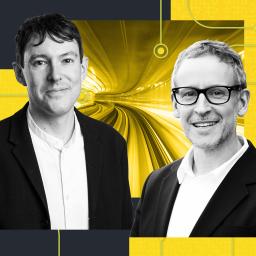 |
by Will Douglas Heaven and Tim Bradshaw on (#720VV)
Welcome back to The State of AI, a new collaboration between the Financial Times and MIT Technology Review. Every Monday, writers from both publications debate one aspect of the generative AI revolution reshaping global power.You can read the rest of the series here. In this final edition, MIT Technology Review's senior AI editor Will Douglas...
|
by Charlotte Jee on (#720PA)
This is today's edition ofThe Download,our weekday newsletter that provides a daily dose of what's going on in the world of technology. 4 technologies that didn't make our 2026 breakthroughs list If you're a longtime reader, you probably know that our newsroom selects 10 breakthroughs every year that we thinkwill define the future. This group...
 |
by Amy Nordrum on (#720KV)
If you're a longtime reader, you probably know that our newsroom selects 10 breakthroughs every year that we think will define the future. This group exercise is mostly fun and always engrossing, but at times it can also be quite difficult. We collectively pitch dozens of ideas, and the editors meticulously review and debate the...
|
 |
by MIT Technology Review Insights on (#71Z0J)
The past year has marked a turning point in the corporate AI conversation. After a period of eager experimentation, organizations are now confronting a more complex reality: While investment in AI has never been higher, the path from pilot to production remains elusive. Three-quarters of enterprises remain stuck in experimentation mode, despite mounting pressure to...
|
by Charlotte Jee on (#71YY1)
This is today's edition ofThe Download,our weekday newsletter that provides a daily dose of what's going on in the world of technology. AI chatbots can sway voters better than political advertisements The news:Chatting with a politically biased AI model is more effective than political ads at nudging both Democrats and Republicans to support presidential candidates...
 |
by Antonio Regalado on (#71YVN)
One day this fall, I watched an electronic sign outside the Broadway-Lafayette subway station in Manhattan switch seamlessly between an ad for makeup and one promoting the website Pickyourbaby.com, which promises a way for potential parents to use genetic tests to influence their baby's traits, including eye color, hair color, and IQ. Inside the station,...
|
 |
by Tal Feldman, Aneesh Pappu on (#71YSA)
In January 2024, the phone rang in homes all around New Hampshire. On the other end was Joe Biden's voice, urging Democrats to save your vote" by skipping the primary. It sounded authentic, but it wasn't. The call was a fake, generated by artificial intelligence. Today, the technology behind that hoax looks quaint. Tools like...
|
 |
by Michelle Kim on (#71YCZ)
In 2024, a Democratic congressional candidate in Pennsylvania, Shamaine Daniels, used an AI chatbot named Ashley to call voters and carry on conversations with them. Hello. My name is Ashley, and I'm an artificial intelligence volunteer for Shamaine Daniels's run for Congress," the calls began. Daniels didn't ultimately win. But maybe those calls helped her...
|
 |
by MIT Technology Review Insights on (#71Y3Q)
Most organizations feel the imperative to keep pace with continuing advances in AI capabilities, as highlighted in a recent MIT Technology Review Insights report. That clearly has security implications, particularly as organizations navigate a surge in the volume, velocity, and variety of security data. This explosion of data, coupled with fragmented toolchains, is making it...
|
by Rhiannon Williams on (#71Y18)
This is today's edition ofThe Download,our weekday newsletter that provides a daily dose of what's going on in the world of technology. OpenAI has trained its LLM to confess to bad behavior What's new: OpenAI is testing a new way to expose the complicated processes at work inside large language models. Researchers at the company...
 |
by Casey Crownhart on (#71Y19)
Sometimes geothermal hot spots are obvious, marked by geysers and hot springs on the planet's surface. But in other places, they're obscured thousands of feet underground. Now AI could help uncover these hidden pockets of potential power. A startup company called Zanskar announced today that it's used AI and other advanced computational methods to uncover...
|
 |
by Casey Crownhart on (#71XYY)
As many of us are ramping up with shopping, baking, and planning for the holiday season, nuclear power plants are also getting ready for one of their busiest seasons of the year. Here in the US, nuclear reactors follow predictable seasonal trends. Summer and winter tend to see the highest electricity demand, so plant operators...
|
 |
by Will Douglas Heaven on (#71XCX)
OpenAI is testing another new way to expose the complicated processes at work inside large language models. Researchers at the company can make an LLM produce what they call a confession, in which the model explains how it carried out a task and (most of the time) owns up to any bad behavior. Figuring out...
|
 |
by Rhiannon Williams on (#71X56)
This is today's edition ofThe Download,our weekday newsletter that provides a daily dose of what's going on in the world of technology. Everything you need to know about AI and coding AI has already transformed how code is written, but a new wave of autonomous systems promise to make the process even smoother and less...
|